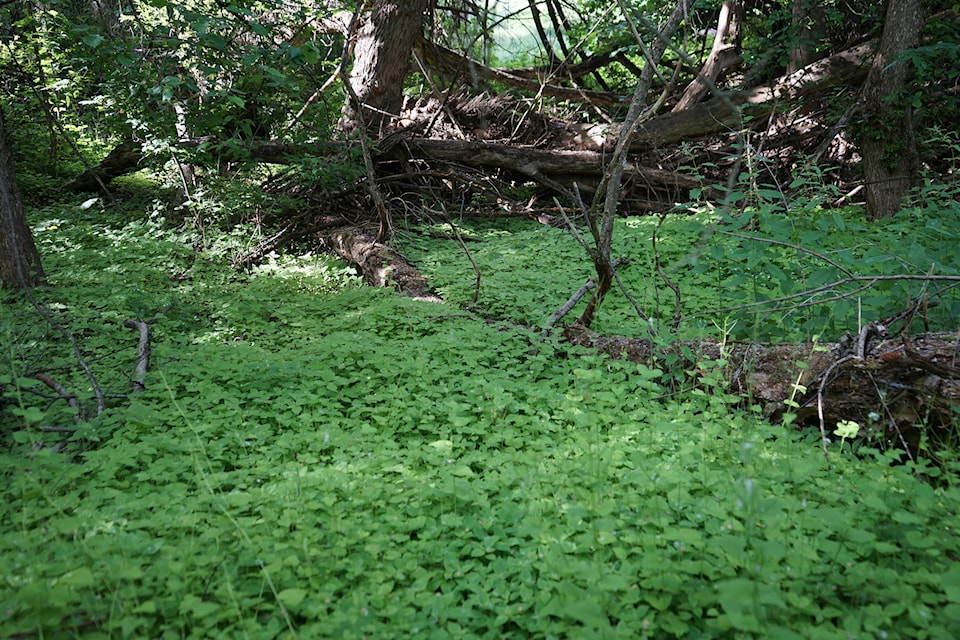Submitted by the Invasive Species Council of British Columbia
The Invasive Species Council of BC asks the public to be on the lookout for Garlic mustard (Alliara petiolata) in the Okanagan this summer.
This invasive plant is classified as provincially noxious by the provincial government and has significant potential to spread aggressively.
Sightings of Garlic mustard have already been confirmed in the Central and North Okanagan. The public can help prevent the spread by learning how to recognize and report sightings of Garlic mustard.
Why should we care?
Garlic mustard is considered one of the worst invasive plants in Canada. It threatens forest ecosystems by disrupting the natural plant community. Garlic mustard outgrows native plants including species at risk, which reduces natural food sources and availability of homes for wildlife. It produces chemicals in the soil that reduce the ability of other plants and fungi to grow. Garlic mustard can also impact salamanders and kill the larvae of certain butterfly species, which hatch on the plant.
Garlic mustard spreads aggressively. Just one single Garlic mustard plant can produce up to 8,000 seeds that easily attach to footwear, clothing, animal fur and machinery. Garlic mustard seeds can germinate after being dormant in the soil for up to five-10 years. Garlic mustard can also regrow when cut down or mowed, making this plant difficult to control.
To help prevent the spread, learn how to spot Garlic mustard in your local parks and forests. When immature, the plant forms a rosette or low-growing cluster of kidney-shaped leaves. It typically grows to about three feet tall with dark green, triangular-shaped leaves alternating off one main stem and getting smaller towards the top of the plant. It typically blooms from April to June with small, white, four-petalled flowers near the top of the plant, producing slender seedpods. If crushed, the leaves smell like garlic.
Prevention is the best approach to protect our ecosystems against a Garlic mustard invasion! Always be sure to brush off your clothing, boots, and equipment before entering and leaving an area to ensure you are not unknowingly transporting invasive seeds.
To control an infestation, timing is important. Garlic mustard should be manually removed when it is about to bloom or already flowering. It is best not to pull Garlic mustard when seedpods have formed as disturbance will release more seeds into the environment. For small infestations, Garlic mustard is easily removed by hand-pulling, removing as much of the taproot as possible. Never compost this plant! The pulled weeds can be disposed of in securely tied garbage bags at your local landfill.
Reporting sightings of Garlic mustard and other invasive species in B.C is important to help inform government efforts to control invasive species. You can download and use the free Report Invasives phone app or use the online reporting form at bcinvasives.ca/report.
Include at least one high-quality photo to help with confirmation of your identification. Together we can help curb and control the invasion of this aggressive invasive plant.
READ MORE: Noxious weed takes root in Coldstream
READ MORE: Two Okanagan cannabis facilities reportedly raided
@VernonNews
newsroom@vernonmorningstar.com
Like us on Facebook and follow us on Twitter.
